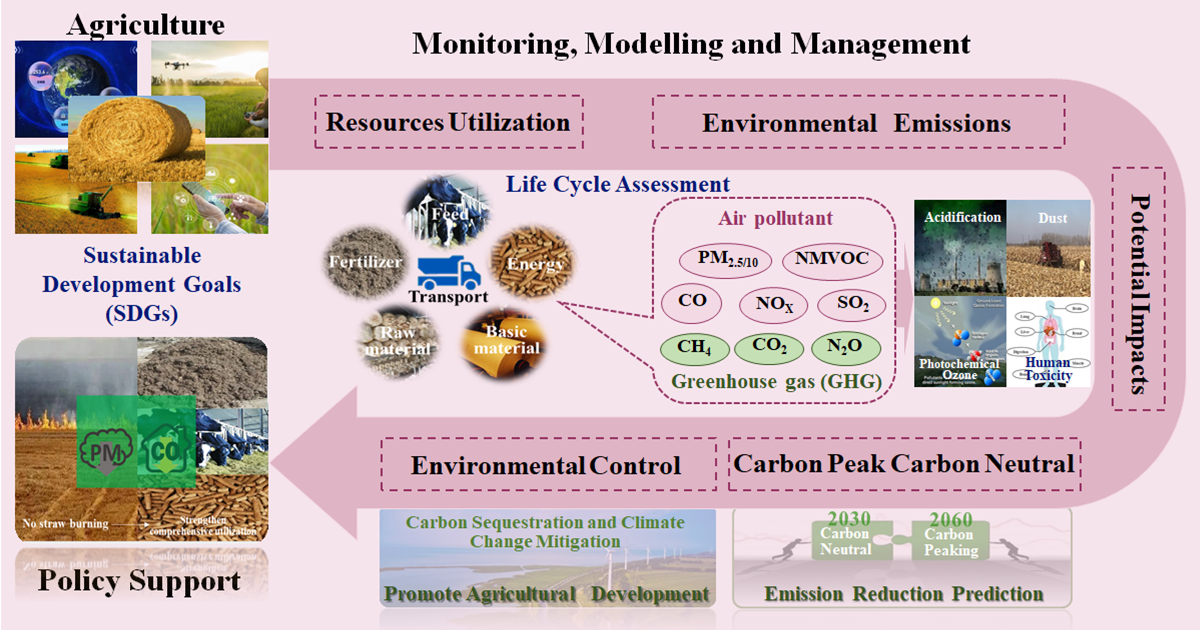- 3.6Impact Factor
- 6.3CiteScore
- 19 daysTime to First Decision
Monitoring, Modelling and Management of Agricultural Air Pollutants and Greenhouse Gases
This special issue belongs to the section “Ecosystem, Environment and Climate Change in Agriculture“.
Special Issue Information
Dear Colleagues,
The rapid development of modern agriculture has provided considerable benefits to the growing population of the world. Meanwhile, agricultural activities have also produced some undesirable environmental consequences, including air pollution and climate change, which are having increasingly deleterious effects on the health of the ecosystem and humans. In order to reduce agriculture-related atmospheric emissions, the utilization of appropriate technologies and methodologies to realistically evaluate the impact of pollution on the atmosphere and suggest options for mitigation may be of use to farmers and policy makers. These feedback mechanisms rely on observed effects, measured pollutant concentrations, and modeling to predict the transport and fate of pollutants and to estimate potential risks.
This Special Issue focuses on the monitoring, modelling and management of the air pollutants and greenhouse gases (GHG) emitted from agricultural activities, including farmland soil management, fertilization, pesticide use, agricultural machinery, residue burning, and animal feeding operations (AFOs). This Special Issue welcomes interdisciplinary studies that are relevant to a range of research fields, including agricultural environment, biology, chemistry and engineering. The published research articles will address a broad range of agricultural atmospheric pollutants and GHGs, from ground monitoring to remote sensing, and from simulation modelling to mitigation technologies. Original research articles, opinions and reviews are welcome.
Prof. Dr. Weiwei Chen
Prof. Dr. Qiuju Xie
Prof. Dr. Li Guo
Guest Editors
Manuscript Submission Information
Manuscripts should be submitted online at www.mdpi.com by registering and logging in to this website. Once you are registered, click here to go to the submission form. Manuscripts can be submitted until the deadline. All submissions that pass pre-check are peer-reviewed. Accepted papers will be published continuously in the journal (as soon as accepted) and will be listed together on the special issue website. Research articles, review articles as well as short communications are invited. For planned papers, a title and short abstract (about 250 words) can be sent to the Editorial Office for assessment.
Submitted manuscripts should not have been published previously, nor be under consideration for publication elsewhere (except conference proceedings papers). All manuscripts are thoroughly refereed through a single-blind peer-review process. A guide for authors and other relevant information for submission of manuscripts is available on the Instructions for Authors page. Agriculture is an international peer-reviewed open access semimonthly journal published by MDPI.
Please visit the Instructions for Authors page before submitting a manuscript. The Article Processing Charge (APC) for publication in this open access journal is 2600 CHF (Swiss Francs). Submitted papers should be well formatted and use good English. Authors may use MDPI's English editing service prior to publication or during author revisions.
Keywords
- agricultural residues
- life cycle assessment
- emissions
- nitrogen utilization
- environmental impacts
- Sustainable Development Goals (SDGs)
- environmental control

Benefits of Publishing in a Special Issue
- Ease of navigation: Grouping papers by topic helps scholars navigate broad scope journals more efficiently.
- Greater discoverability: Special Issues support the reach and impact of scientific research. Articles in Special Issues are more discoverable and cited more frequently.
- Expansion of research network: Special Issues facilitate connections among authors, fostering scientific collaborations.
- External promotion: Articles in Special Issues are often promoted through the journal's social media, increasing their visibility.
- e-Book format: Special Issues with more than 10 articles can be published as dedicated e-books, ensuring wide and rapid dissemination.

